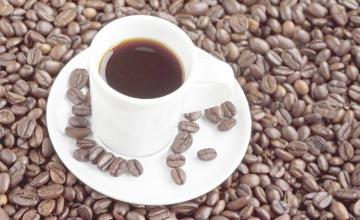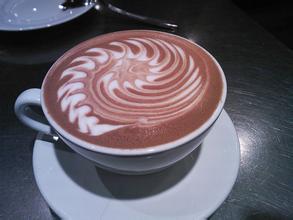Introduction to the quality characteristics of Brazilian coffee bean picking season flavor description treatment method
Brazilian coffee beans
Picking: most of them are picked manually. Only ripe coffee berries of similar size are picked so that the peeling machine can handle them.
Cleaning: soak the coffee berries in water in order to remove overripe coffee berries. Coffee berries that are not ripe enough will be removed in other ways.
Peeling: after the coffee berries are softened in water, they are treated in a peeling machine, and some of the flesh will be removed.
Remove pulp: remove the flesh artificially and rinse with a lot of water in the cement ditch.
Clean the mucous membrane: put the coffee beans in the cement ditch again and wash the mucous membrane on the surface of the coffee beans with water.
Soak screening: soak the coffee beans in water to remove the overripe coffee beans floating on the surface.
Drying: exposure to the sun for one to three weeks, or machine drying, reduces the water content of coffee beans from 50% to less than 12%.
Storage and polishing: dried coffee beans can be stored in storage. But there is another step before export sales, which is polishing in order to remove the silver skin from the surface of coffee beans.
Also known as drying process. After the coffee berries are fully ripe, they will fall from the tree. After natural drying, the coffee beans will come out of the coffee berries and become mature coffee beans. This is probably the earliest way to process coffee beans. Later, this method evolved into a "drying process".
The basic process of this processing method is:
Picking: usually picked by machine.
Drying: you can use sunlight to dry the fruit, or use a dryer to dry. Store in the cellar when the humidity reaches 12%.
Shelling: use a special sheller to remove the fruit shell.
Polishing: coffee beans retain the silver skin on the outside of coffee beans before they are exported. It will be removed only after the export order is placed and can be shipped abroad after polishing.
Coffee beans processed by this process are called "dried beans", or "natural beans".

Important Notice :
前街咖啡 FrontStreet Coffee has moved to new addredd:
FrontStreet Coffee Address: 315,Donghua East Road,GuangZhou
Tel:020 38364473
- Prev

Introduction to the quality characteristics of Yega Fischer Coffee Flavor description treatment in Ethiopia
Introduction to Ethiopian Coffee beans in February 1977, Lieutenant Colonel Mengistu Hale Maryam (MENGISTU HAILE MARIAM) launched a military coup and served as Chairman and head of State of the interim military Administrative Council. In 1979, the Ethiopian Labor people's Party Organization Committee, dominated by soldiers, was established to implement an one-party system. In 1984, the Ethiopian Workers' Party was formed according to the Soviet Communist Party model.
- Next

Description and treatment of Coffee Flavor in Hartmann Manor, Panama
Panamanian Coffee came to Hartman Manor in Panama, and we saw that people growing coffee here always followed the requirements of green protection, and the farm compost was made from pulp and cherry skins. Curious about what kind of coffee taste will be nurtured in such an environment, I can't wait to make a cup of Hartman. Ta has a pure flavor, sweet and bright tone, and has a strong honey.
Related
- Detailed explanation of Jadeite planting Land in Panamanian Jadeite Manor introduction to the grading system of Jadeite competitive bidding, Red bid, Green bid and Rose Summer
- Story of Coffee planting in Brenka region of Costa Rica Stonehenge Manor anaerobic heavy honey treatment of flavor mouth
- What's on the barrel of Blue Mountain Coffee beans?
- Can American coffee also pull flowers? How to use hot American style to pull out a good-looking pattern?
- Can you make a cold extract with coffee beans? What is the right proportion for cold-extracted coffee formula?
- Indonesian PWN Gold Mandrine Coffee Origin Features Flavor How to Chong? Mandolin coffee is American.
- A brief introduction to the flavor characteristics of Brazilian yellow bourbon coffee beans
- What is the effect of different water quality on the flavor of cold-extracted coffee? What kind of water is best for brewing coffee?
- Why do you think of Rose Summer whenever you mention Panamanian coffee?
- Introduction to the characteristics of authentic blue mountain coffee bean producing areas? What is the CIB Coffee Authority in Jamaica?

